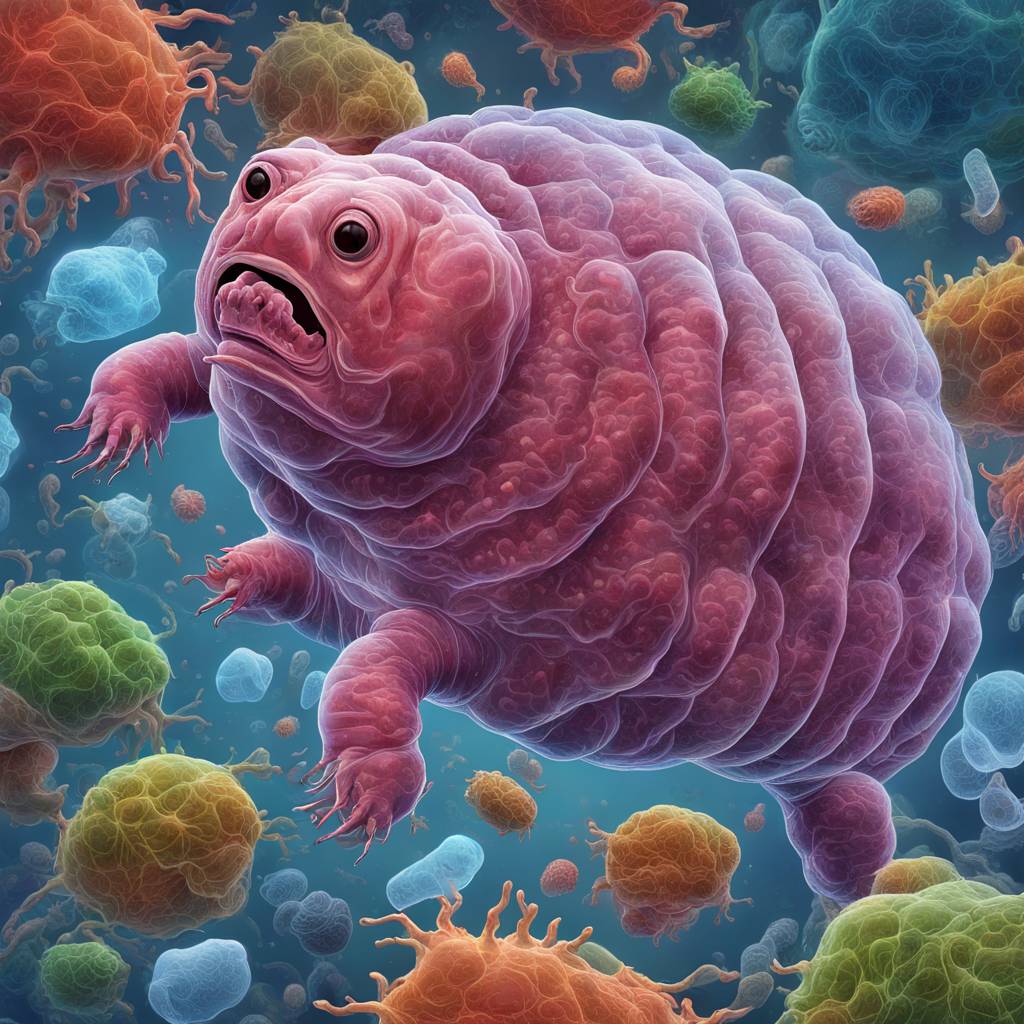The University of Wyoming researchers have delved deeper into understanding how tardigrades, also known as water bears, are able to survive extreme conditions by entering a state of suspended animation called biostasis. A recent study published in the journal Protein Science explores the mechanisms utilized by tardigrades to enter and exit biostasis when faced with environmental stress. Led by Senior Research Scientist Silvia Sanchez-Martinez and Assistant Professor Thomas Boothby, the research has revealed that tardigrade proteins can be expressed in human cells to slow down molecular processes, making them potential candidates for technologies aimed at slowing the aging process and enhancing the long-term storage of human cells.
Measuring less than half a millimeter in length, tardigrades have the remarkable ability to survive being completely dried out, frozen to just above absolute zero, exposed to extreme heat or radiation, and even the vacuum of outer space. They achieve this survival by forming proteins that create gels inside cells, which slow down life processes. The collaborative study involved researchers from various institutions, including the University of Bristol, Washington University in St. Louis, and the University of California-Merced, among others. Sanchez-Martinez, who was the lead author of the study, highlights that when tardigrade proteins are introduced into human cells, they can induce a similar state of biostasis, making the cells more resilient to stress and conferring some of the unique abilities of tardigrades onto human cells.
The research conducted by Boothby’s team demonstrates that the process of inducing biostasis in cells using tardigrade proteins is reversible. When the stress is removed, the gel formed by these proteins dissolves, and the human cells return to their normal metabolic processes. This discovery opens up opportunities for developing technologies focused on inducing biostasis in cells and potentially whole organisms to slow down the aging process and improve the storage and stability of biological materials. In a previous study, the researchers showed that tardigrade proteins could be used to stabilize pharmaceuticals used to treat conditions like hemophilia without requiring refrigeration, highlighting the practical applications of their research.
Tardigrades’ ability to survive desiccation has long puzzled scientists, as they achieve this in a unique manner that sets them apart from other organisms capable of entering suspended animation. The study sheds light on the mechanisms behind this resilience, offering insights into how tardigrades are able to withstand extreme conditions that would be fatal to most other organisms. By understanding and harnessing the properties of tardigrade proteins, researchers aim to develop innovative technologies that could have significant implications for human health, aging, and the storage of biological materials. The collaboration between different institutions and researchers involved in the study emphasizes the importance of multidisciplinary approaches in unraveling the mysteries of nature and translating them into practical applications for human benefit.
The potential of tardigrade proteins in advancing biostasis technologies opens up a range of possibilities for improving medical treatments, enhancing storage methods for biological materials, and exploring new avenues for research in biology and bioengineering. The study not only deepens our understanding of how tardigrades survive extreme conditions but also highlights the potential of these microscopic creatures in inspiring novel solutions for human health and longevity. By studying the mechanisms involved in tardigrades’ unique survival strategies, researchers are uncovering valuable insights that could lead to breakthroughs in areas such as aging research, regenerative medicine, and pharmaceutical development. The reversible nature of the biostasis induced by tardigrade proteins offers promising prospects for developing interventions that could transform the way we approach health care and biotechnology in the future.


